|
This was given to a student to REALLY push and test their skills with playing Gallop and Reverse Gallop rhythms. Every bar is a different rhythm. The count for this strumming pattern is 1_na2_na3en_4_na 1en_2_na3en_4en_ 1_na2en_3en_4_na 1en_2_na3_na4en_ Want more stuff like this?MASSIVE collections of real lessons I've given to students can be purchased for dirt cheap! Click on either option below to see what's included in each volume. 666 Real Lessons - Volume 1
$6.66
CLICK HERE to get Volumes 1 and 2 at a discount! You can think of this as sort of a grab bag of various things given to students throughout the years. Every collection contains Guitar Pro files. Yes, you will need to be able to view Guitar Pro 7 files to use this collection. I'm not affiliated with Guitar Pro, and I receive no money from sales from them. That being said, I highly recommend this program to anyone who is serious about learning and/or writing their own guitar music. Right now, there are two collections. As more students receive lessons, more volumes/collections will be released. Here is what you can find in volume one:
666 Real Lessons - Volume 2
$6.66
CLICK HERE to get Volumes 1 and 2 at a discount! You can think of this as sort of a grab bag of various things given to students throughout the years. Every collection contains Guitar Pro files. Yes, you will need to be able to view Guitar Pro 7 files to use this collection. I'm not affiliated with Guitar Pro, and I receive no money from sales from them. That being said, I highly recommend this program to anyone who is serious about learning and/or writing their own guitar music. As more students receive lessons, more volumes/collections will be released. Here is what you can find in volume two:
666 Real Guitar Lessons - Both Volumes
$9.99
Both Volumes 1 and 2 - 666 Real Lessons, giving you a total of 1,332 different things to play! You can think of this as sort of a grab bag of various things given to students throughout the years. Every collection contains Guitar Pro files. Yes, you will need to be able to view Guitar Pro 7 files to use this collection. I'm not affiliated with Guitar Pro, and I receive no money from sales from them. That being said, I highly recommend this program to anyone who is serious about learning and/or writing their own guitar music.
0 Comments
These short 16th note legato bursts were given to a student to help them push their speeds. Short bursts like this are great for pushing your boundaries! Want more stuff like this?MASSIVE collections of real lessons I've given to students can be purchased for dirt cheap! 666 Real Lessons - Volume 1
$6.66
CLICK HERE to get Volumes 1 and 2 at a discount! You can think of this as sort of a grab bag of various things given to students throughout the years. Every collection contains Guitar Pro files. Yes, you will need to be able to view Guitar Pro 7 files to use this collection. I'm not affiliated with Guitar Pro, and I receive no money from sales from them. That being said, I highly recommend this program to anyone who is serious about learning and/or writing their own guitar music. Right now, there are two collections. As more students receive lessons, more volumes/collections will be released. Here is what you can find in volume one:
666 Real Lessons - Volume 2
$6.66
CLICK HERE to get Volumes 1 and 2 at a discount! You can think of this as sort of a grab bag of various things given to students throughout the years. Every collection contains Guitar Pro files. Yes, you will need to be able to view Guitar Pro 7 files to use this collection. I'm not affiliated with Guitar Pro, and I receive no money from sales from them. That being said, I highly recommend this program to anyone who is serious about learning and/or writing their own guitar music. As more students receive lessons, more volumes/collections will be released. Here is what you can find in volume two:
666 Real Guitar Lessons - Both Volumes
$9.99
Both Volumes 1 and 2 - 666 Real Lessons, giving you a total of 1,332 different things to play! You can think of this as sort of a grab bag of various things given to students throughout the years. Every collection contains Guitar Pro files. Yes, you will need to be able to view Guitar Pro 7 files to use this collection. I'm not affiliated with Guitar Pro, and I receive no money from sales from them. That being said, I highly recommend this program to anyone who is serious about learning and/or writing their own guitar music. Here is a fairly simple chord progression and common metal guitar strumming pattern. Although it may be simple and straightforward, getting this up to and beyond 180 BPM will prove to be quite challenging for most people. How fast can YOU get this? The count for this rhythm is 1en_2en_3en_4en_ Want more stuff like this?MASSIVE collections of real lessons I've given to students can be purchased for dirt cheap! 666 Real Lessons - Volume 1
$6.66
CLICK HERE to get Volumes 1 and 2 at a discount! You can think of this as sort of a grab bag of various things given to students throughout the years. Every collection contains Guitar Pro files. Yes, you will need to be able to view Guitar Pro 7 files to use this collection. I'm not affiliated with Guitar Pro, and I receive no money from sales from them. That being said, I highly recommend this program to anyone who is serious about learning and/or writing their own guitar music. Right now, there are two collections. As more students receive lessons, more volumes/collections will be released. Here is what you can find in volume one:
666 Real Lessons - Volume 2
$6.66
CLICK HERE to get Volumes 1 and 2 at a discount! You can think of this as sort of a grab bag of various things given to students throughout the years. Every collection contains Guitar Pro files. Yes, you will need to be able to view Guitar Pro 7 files to use this collection. I'm not affiliated with Guitar Pro, and I receive no money from sales from them. That being said, I highly recommend this program to anyone who is serious about learning and/or writing their own guitar music. As more students receive lessons, more volumes/collections will be released. Here is what you can find in volume two:
666 Real Guitar Lessons - Both Volumes
$9.99
Both Volumes 1 and 2 - 666 Real Lessons, giving you a total of 1,332 different things to play! You can think of this as sort of a grab bag of various things given to students throughout the years. Every collection contains Guitar Pro files. Yes, you will need to be able to view Guitar Pro 7 files to use this collection. I'm not affiliated with Guitar Pro, and I receive no money from sales from them. That being said, I highly recommend this program to anyone who is serious about learning and/or writing their own guitar music. This rhythm/strumming pattern is VERY difficult for most people. This was given to a student when he was nearing the end of his 16th note strumming work. Not only is there a 4:3 polyrhythm being played (four chords evenly spaced across three beats), but there's also a polymeter going on. The strumming pattern begins again after three beats (in the first three bars). This basically fits the strumming pattern in a 3/4 time signature, while each bar is in a 4/4 time signature. This makes things EXTRA confusing! The fourth bar completely breaks away from everything presented in the first three bars for added challenge. Want more stuff like this?MASSIVE collections of real lessons I've given to students can be purchased for dirt cheap! 666 Real Lessons - Volume 1
$6.66
CLICK HERE to get Volumes 1 and 2 at a discount! You can think of this as sort of a grab bag of various things given to students throughout the years. Every collection contains Guitar Pro files. Yes, you will need to be able to view Guitar Pro 7 files to use this collection. I'm not affiliated with Guitar Pro, and I receive no money from sales from them. That being said, I highly recommend this program to anyone who is serious about learning and/or writing their own guitar music. Right now, there are two collections. As more students receive lessons, more volumes/collections will be released. Here is what you can find in volume one:
666 Real Lessons - Volume 2
$6.66
CLICK HERE to get Volumes 1 and 2 at a discount! You can think of this as sort of a grab bag of various things given to students throughout the years. Every collection contains Guitar Pro files. Yes, you will need to be able to view Guitar Pro 7 files to use this collection. I'm not affiliated with Guitar Pro, and I receive no money from sales from them. That being said, I highly recommend this program to anyone who is serious about learning and/or writing their own guitar music. As more students receive lessons, more volumes/collections will be released. Here is what you can find in volume two:
666 Real Guitar Lessons - Both Volumes
$9.99
Both Volumes 1 and 2 - 666 Real Lessons, giving you a total of 1,332 different things to play! You can think of this as sort of a grab bag of various things given to students throughout the years. Every collection contains Guitar Pro files. Yes, you will need to be able to view Guitar Pro 7 files to use this collection. I'm not affiliated with Guitar Pro, and I receive no money from sales from them. That being said, I highly recommend this program to anyone who is serious about learning and/or writing their own guitar music. Here's a challenging yet fun scale run/lick to add to your shred guitar tool kit!
All of the odd number bars play two groups of sixes, and all of the even number bars have you run up or down notes one after the next. Most likely, the even numbers bars will prove to be the most challenging. If you'd like practice advice on how to push something like this to the max, there's a free eBook I put out called the Metronome Method, and the principles taught are how I got this lick up to 300 bpm, as shown at the start of the video in this post. CLICK HERE to read more about this free eBook written to help everyone learn how to push themselves past their current limitations. This was given to a student to help them push your reverse gallop strumming endurance. The goal was to see how many repetitions he could do at 160 bpm. This progression uses a half-whole diminished scale to make it easier to remember, plus it just sounds great for metal! The count for this is 1en_2en_3en_4en_ Want more stuff like this?MASSIVE collections of real lessons I've given to students can be purchased for dirt cheap! 666 Real Lessons - Volume 1
$6.66
CLICK HERE to get Volumes 1 and 2 at a discount! You can think of this as sort of a grab bag of various things given to students throughout the years. Every collection contains Guitar Pro files. Yes, you will need to be able to view Guitar Pro 7 files to use this collection. I'm not affiliated with Guitar Pro, and I receive no money from sales from them. That being said, I highly recommend this program to anyone who is serious about learning and/or writing their own guitar music. Right now, there are two collections. As more students receive lessons, more volumes/collections will be released. Here is what you can find in volume one:
666 Real Lessons - Volume 2
$6.66
CLICK HERE to get Volumes 1 and 2 at a discount! You can think of this as sort of a grab bag of various things given to students throughout the years. Every collection contains Guitar Pro files. Yes, you will need to be able to view Guitar Pro 7 files to use this collection. I'm not affiliated with Guitar Pro, and I receive no money from sales from them. That being said, I highly recommend this program to anyone who is serious about learning and/or writing their own guitar music. As more students receive lessons, more volumes/collections will be released. Here is what you can find in volume two:
666 Real Guitar Lessons - Both Volumes
$9.99
Both Volumes 1 and 2 - 666 Real Lessons, giving you a total of 1,332 different things to play! You can think of this as sort of a grab bag of various things given to students throughout the years. Every collection contains Guitar Pro files. Yes, you will need to be able to view Guitar Pro 7 files to use this collection. I'm not affiliated with Guitar Pro, and I receive no money from sales from them. That being said, I highly recommend this program to anyone who is serious about learning and/or writing their own guitar music. This was given to a student so they could work on gallop and reverse gallop rhythm, along with palm-mute accents. All of the 16th notes are palm-muted. None of the 8th notes are palm-muted. Doing this makes the 8th notes stand out more. The count for this is 1_na2_na3_na4_na 1_na2_na3_na4_na 1en_2en_3en_4en_ 1en_2en_3en_4en_ Want more stuff like this?MASSIVE collections of real lessons I've given to students can be purchased for dirt cheap! 666 Real Lessons - Volume 1
$6.66
CLICK HERE to get Volumes 1 and 2 at a discount! You can think of this as sort of a grab bag of various things given to students throughout the years. Every collection contains Guitar Pro files. Yes, you will need to be able to view Guitar Pro 7 files to use this collection. I'm not affiliated with Guitar Pro, and I receive no money from sales from them. That being said, I highly recommend this program to anyone who is serious about learning and/or writing their own guitar music. Right now, there are two collections. As more students receive lessons, more volumes/collections will be released. Here is what you can find in volume one:
666 Real Lessons - Volume 2
$6.66
CLICK HERE to get Volumes 1 and 2 at a discount! You can think of this as sort of a grab bag of various things given to students throughout the years. Every collection contains Guitar Pro files. Yes, you will need to be able to view Guitar Pro 7 files to use this collection. I'm not affiliated with Guitar Pro, and I receive no money from sales from them. That being said, I highly recommend this program to anyone who is serious about learning and/or writing their own guitar music. As more students receive lessons, more volumes/collections will be released. Here is what you can find in volume two:
666 Real Guitar Lessons - Both Volumes
$9.99
Both Volumes 1 and 2 - 666 Real Lessons, giving you a total of 1,332 different things to play! You can think of this as sort of a grab bag of various things given to students throughout the years. Every collection contains Guitar Pro files. Yes, you will need to be able to view Guitar Pro 7 files to use this collection. I'm not affiliated with Guitar Pro, and I receive no money from sales from them. That being said, I highly recommend this program to anyone who is serious about learning and/or writing their own guitar music. This finger-tapping lick/riff plays the same pattern in three octaves. Technically, you COULD say it covers four octaves because the A note is played in four octaves, but the full pattern is only played in three octaves. This lick is a fun one for me to play, and feels great for crazy amounts of speed! If you'd like practice advice on how to push something like this to the max, there's a free eBook I put out called the Metronome Method, and the principles taught are how I got this lick up to 300 bpm, as shown at the start of the video in this post.
CLICK HERE to read more about this free eBook written to help everyone learn how to push themselves past their current limitations. This was given to a student to help them work on metal rhythms that mix up down picked 8th notes and reverse gallop strumming. The count for this is 1_n_2_3en_4en_ 1_n_2_3en_4en_ 1_n_2_3en_4en_ 1_n_2en_3_n_4en_ Want more stuff like this?MASSIVE collections of real lessons I've given to students can be purchased for dirt cheap! 666 Real Lessons - Volume 1
$6.66
CLICK HERE to get Volumes 1 and 2 at a discount! You can think of this as sort of a grab bag of various things given to students throughout the years. Every collection contains Guitar Pro files. Yes, you will need to be able to view Guitar Pro 7 files to use this collection. I'm not affiliated with Guitar Pro, and I receive no money from sales from them. That being said, I highly recommend this program to anyone who is serious about learning and/or writing their own guitar music. Right now, there are two collections. As more students receive lessons, more volumes/collections will be released. Here is what you can find in volume one:
666 Real Lessons - Volume 2
$6.66
CLICK HERE to get Volumes 1 and 2 at a discount! You can think of this as sort of a grab bag of various things given to students throughout the years. Every collection contains Guitar Pro files. Yes, you will need to be able to view Guitar Pro 7 files to use this collection. I'm not affiliated with Guitar Pro, and I receive no money from sales from them. That being said, I highly recommend this program to anyone who is serious about learning and/or writing their own guitar music. As more students receive lessons, more volumes/collections will be released. Here is what you can find in volume two:
666 Real Guitar Lessons - Both Volumes
$9.99
Both Volumes 1 and 2 - 666 Real Lessons, giving you a total of 1,332 different things to play! You can think of this as sort of a grab bag of various things given to students throughout the years. Every collection contains Guitar Pro files. Yes, you will need to be able to view Guitar Pro 7 files to use this collection. I'm not affiliated with Guitar Pro, and I receive no money from sales from them. That being said, I highly recommend this program to anyone who is serious about learning and/or writing their own guitar music. This was given to a student so they could work on their palm-muting technique and reverse gallop strumming. The count for this rhythm is 1en_2en_3en_4en_ Want more stuff like this?MASSIVE collections of real lessons I've given to students can be purchased for dirt cheap! 666 Real Lessons - Volume 1
$6.66
CLICK HERE to get Volumes 1 and 2 at a discount! You can think of this as sort of a grab bag of various things given to students throughout the years. Every collection contains Guitar Pro files. Yes, you will need to be able to view Guitar Pro 7 files to use this collection. I'm not affiliated with Guitar Pro, and I receive no money from sales from them. That being said, I highly recommend this program to anyone who is serious about learning and/or writing their own guitar music. Right now, there are two collections. As more students receive lessons, more volumes/collections will be released. Here is what you can find in volume one:
666 Real Lessons - Volume 2
$6.66
CLICK HERE to get Volumes 1 and 2 at a discount! You can think of this as sort of a grab bag of various things given to students throughout the years. Every collection contains Guitar Pro files. Yes, you will need to be able to view Guitar Pro 7 files to use this collection. I'm not affiliated with Guitar Pro, and I receive no money from sales from them. That being said, I highly recommend this program to anyone who is serious about learning and/or writing their own guitar music. As more students receive lessons, more volumes/collections will be released. Here is what you can find in volume two:
666 Real Guitar Lessons - Both Volumes
$9.99
Both Volumes 1 and 2 - 666 Real Lessons, giving you a total of 1,332 different things to play! You can think of this as sort of a grab bag of various things given to students throughout the years. Every collection contains Guitar Pro files. Yes, you will need to be able to view Guitar Pro 7 files to use this collection. I'm not affiliated with Guitar Pro, and I receive no money from sales from them. That being said, I highly recommend this program to anyone who is serious about learning and/or writing their own guitar music. |
Archives
July 2024
Categories
All
|
- Metal and Rock Guitar Lessons
- Reach Your Fastest Speeds
-
Menu
- Skype Lessons
- Sign Up for Skype Guitar Lessons
- Video Correspondence Lessons
- Sign Up for Video Correspondence Lessons
- FREE Lessons for a WEEK >
- Free Tabs
- Get TWO FREE eBooks
- Rates
- Instruction Courses >
- Video Feedback Lessons
- Contact
- Blog (LOTS of Free Lessons)
- Student Testimonies
- Backing Tracks
- Store
IN DEPTH
|
|




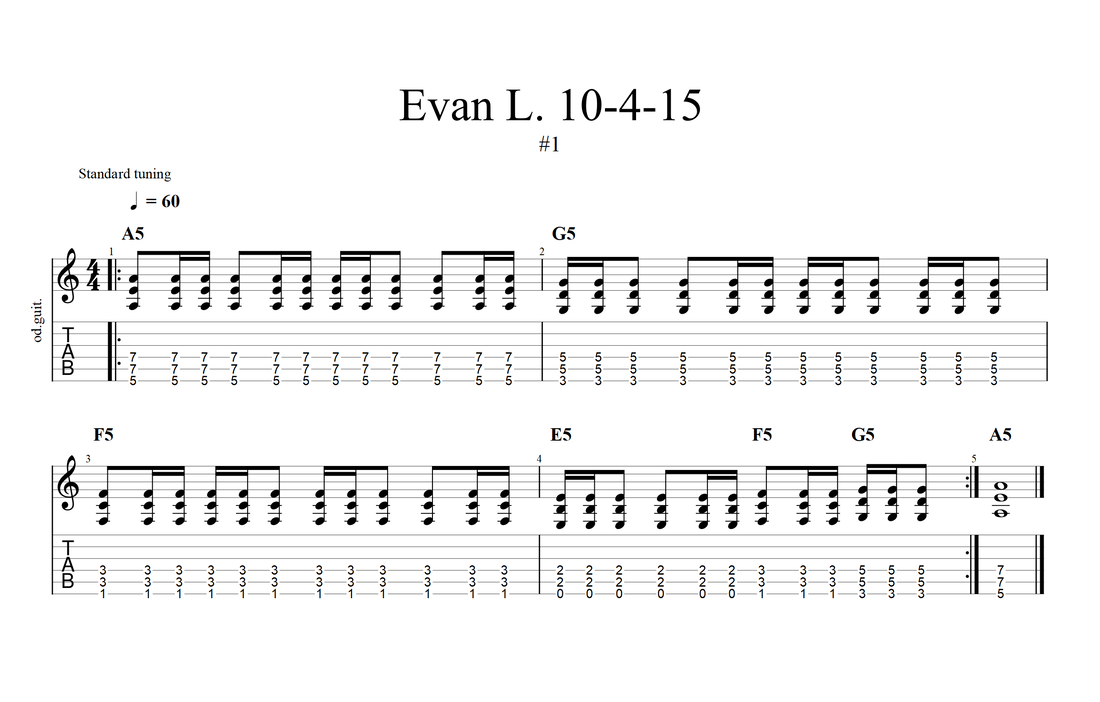
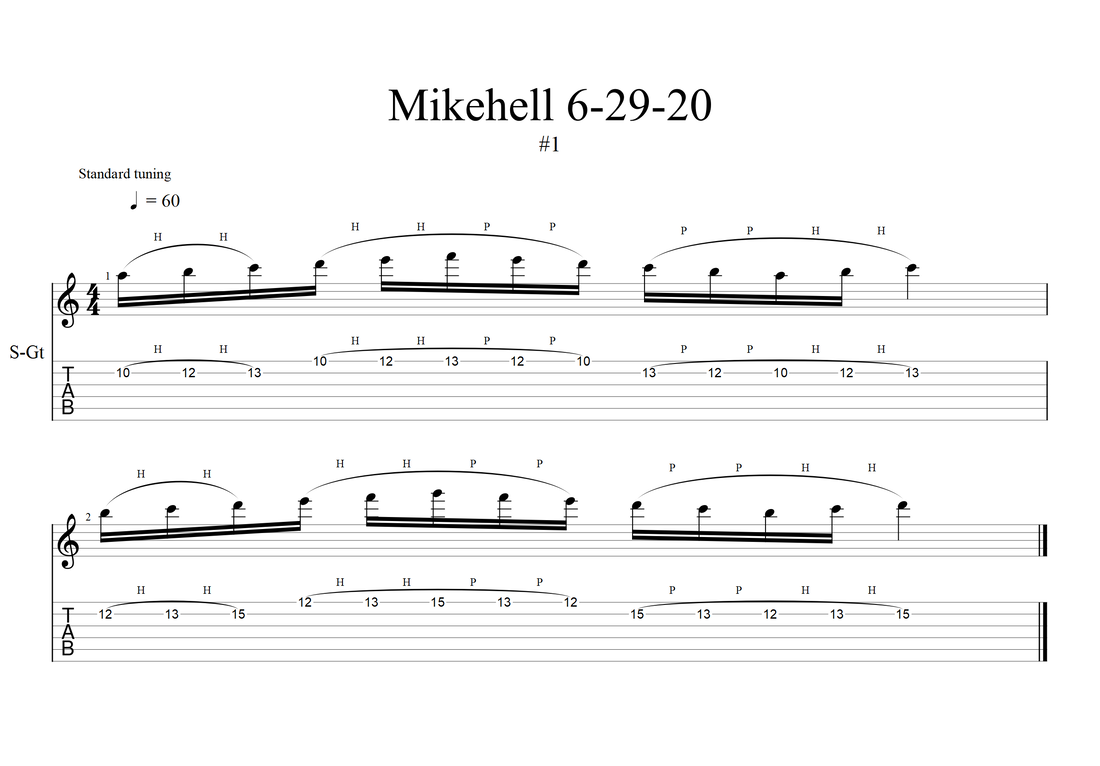
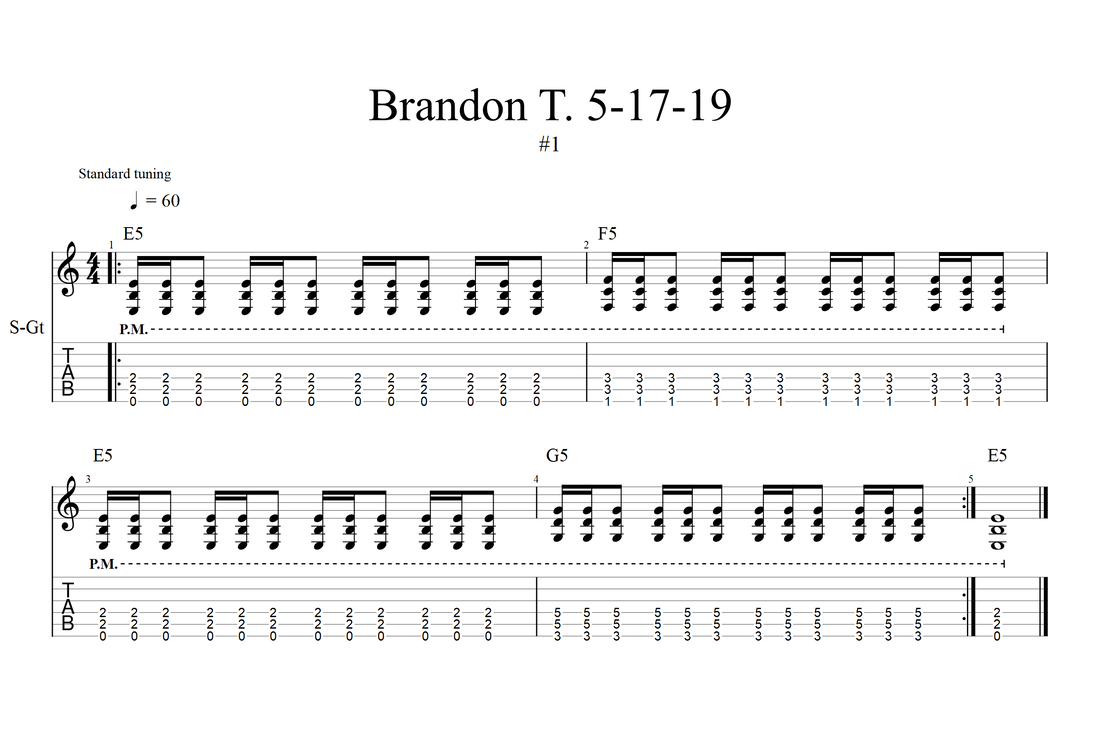
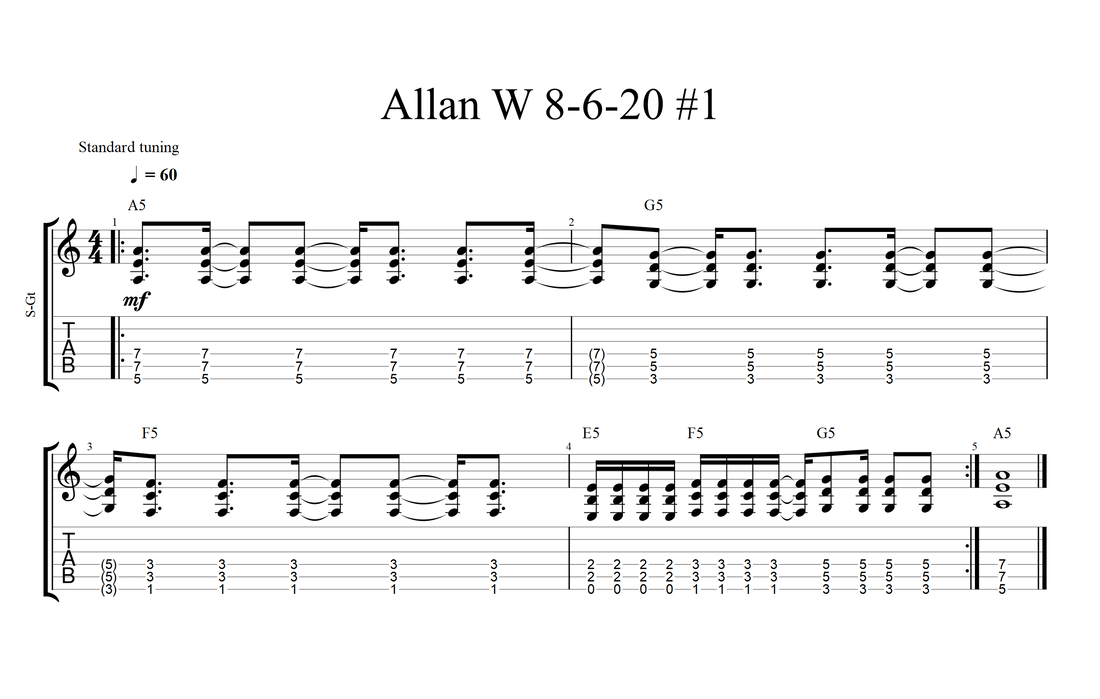
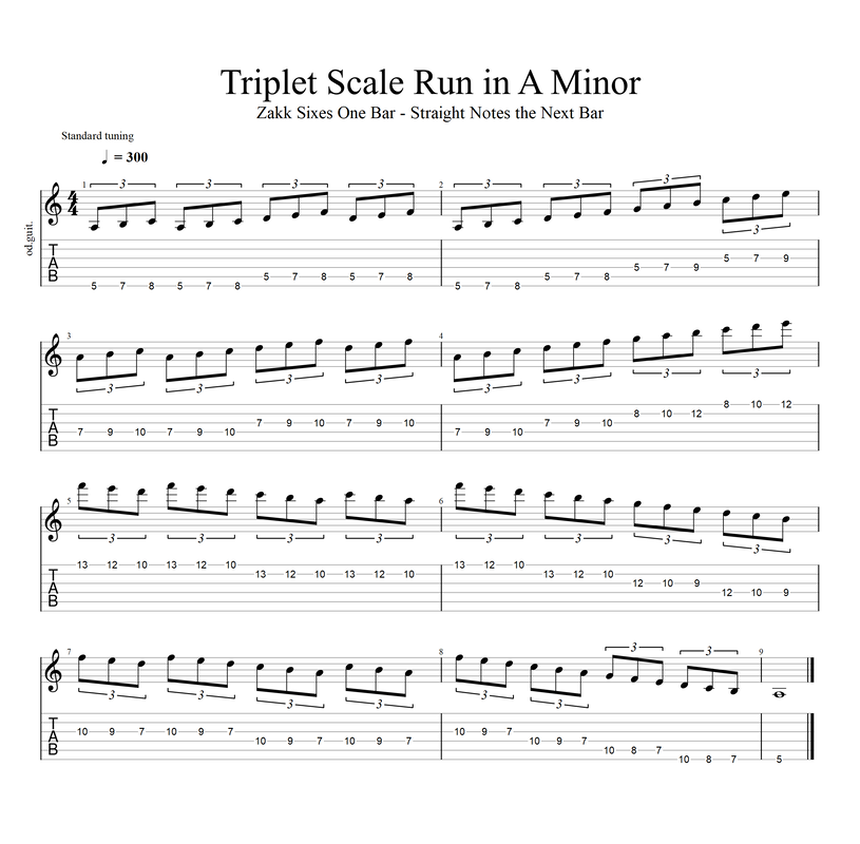
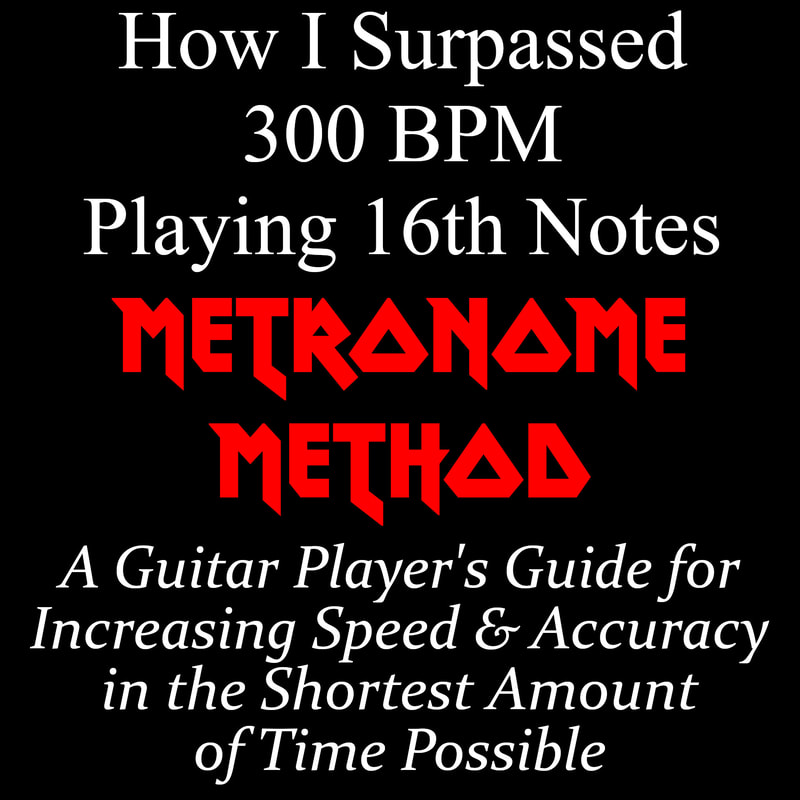
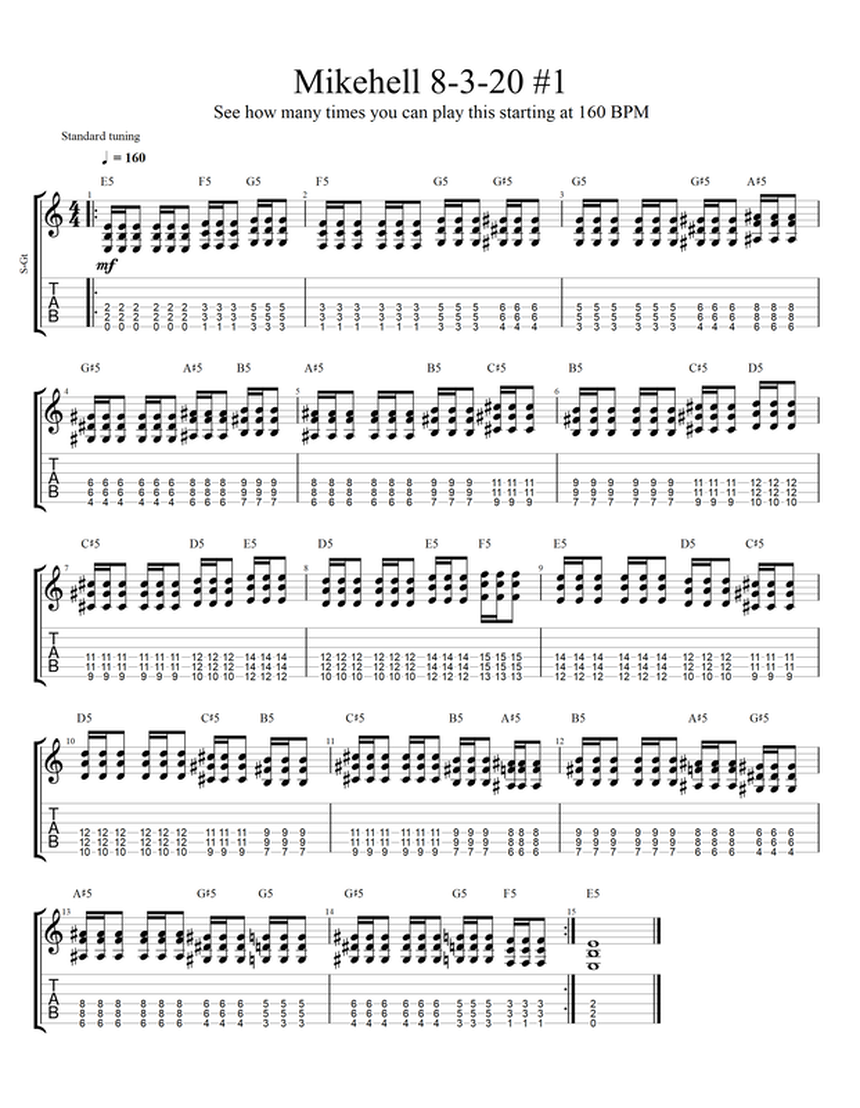
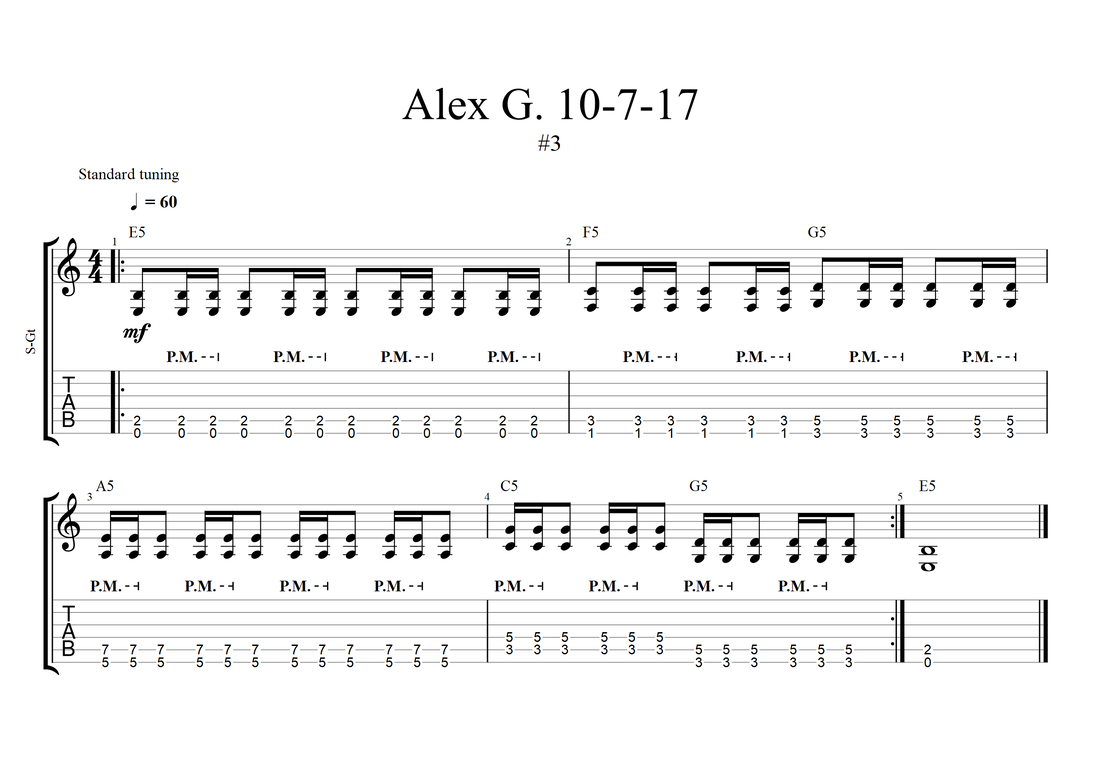
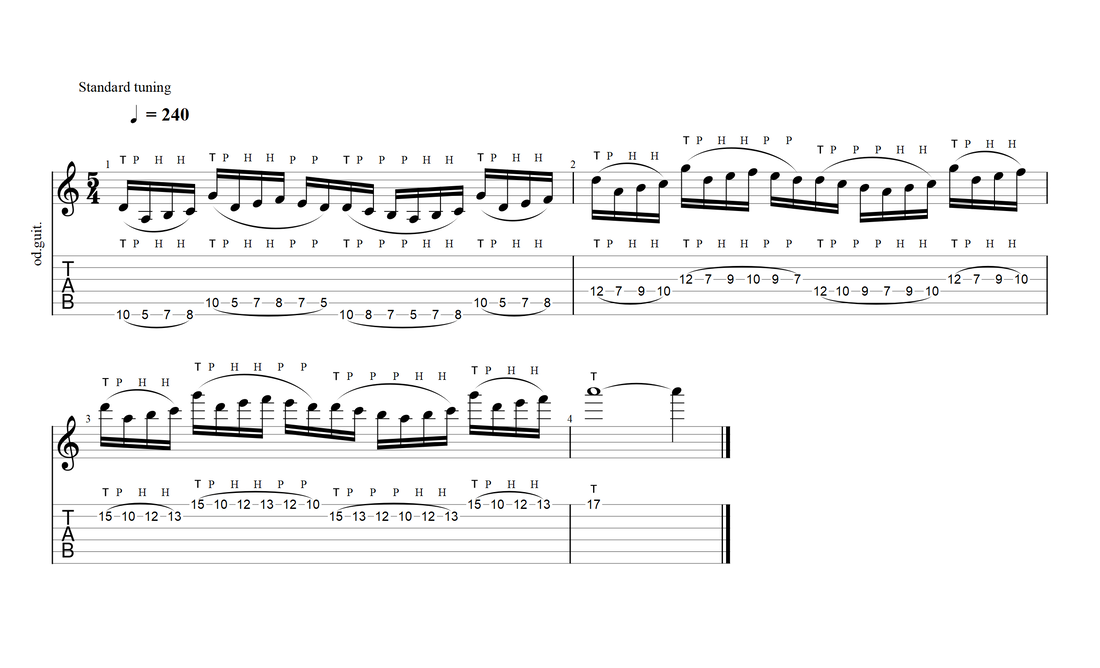
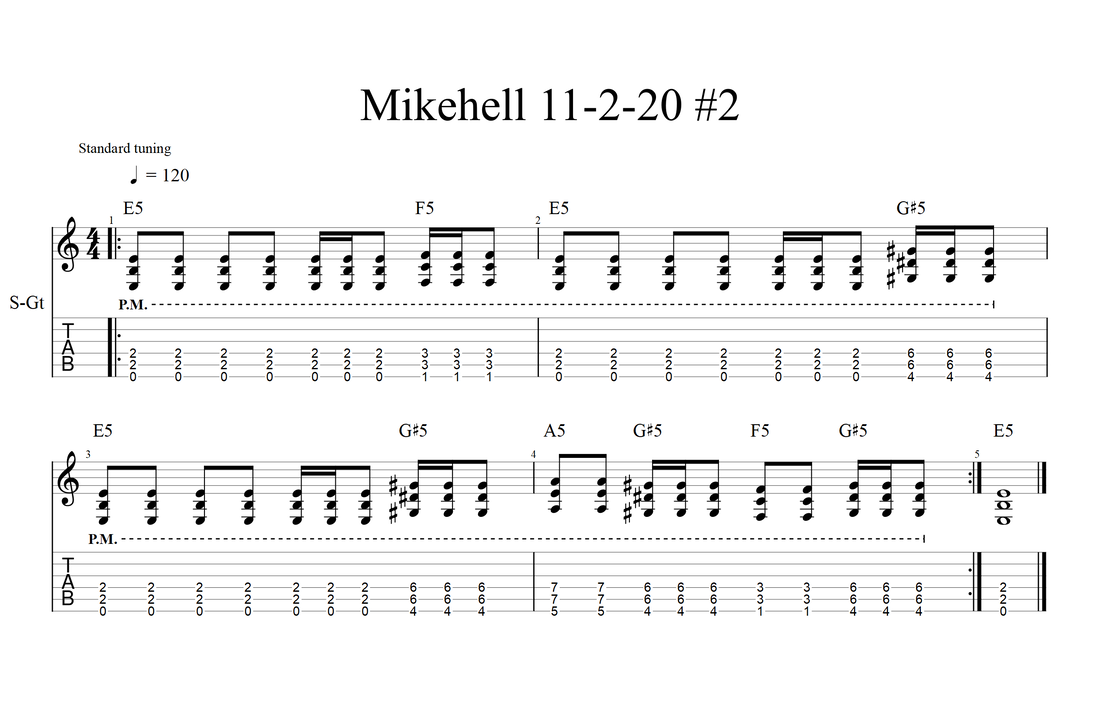



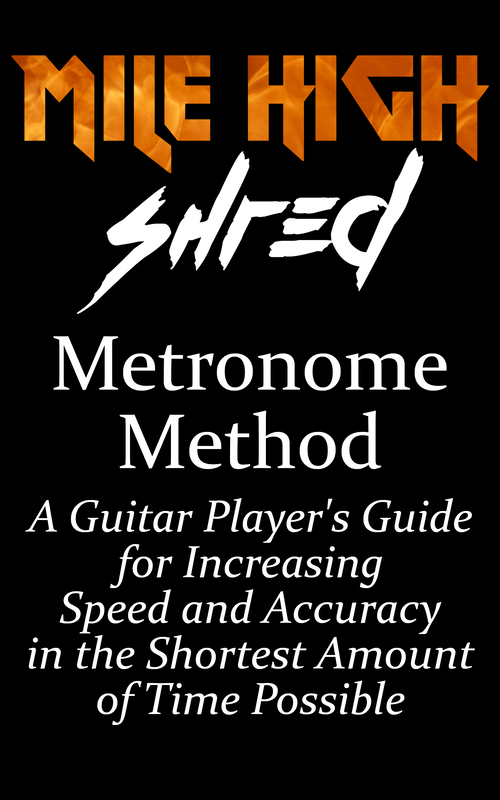
 RSS Feed
RSS Feed